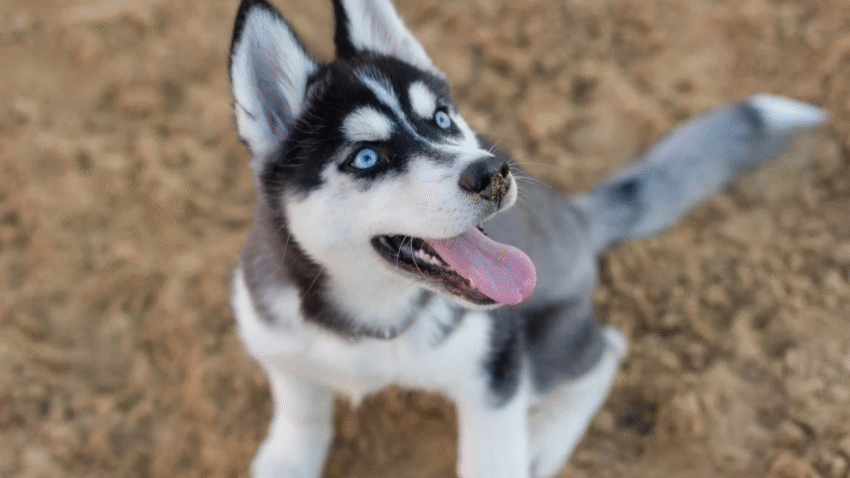Introduction
Noticing clumps or tangles in your dog’s coat? Learning how to safely remove mats from your dog’s fur is an essential skill for maintaining their health and comfort—especially for long-haired or curly-coated breeds. In this step-by-step guide, we’ll show you how to remove mats without pain, reduce stress for your dog, and prevent them from coming back.
Why Mats in Dog Fur Matter
Mats are more than just an eyesore—they can seriously affect your dog’s well-being. A mat is a clump of tangled hair that pulls tightly on your dog’s skin. If left untreated, it can:
- Cause skin irritation or sores
- Trap moisture and dirt, leading to infection
- Hide ticks or other parasites
- Reduce circulation in extreme cases
Dogs with longer coats, undercoats, or curly hair (like Shih Tzus, Golden Retrievers, and Poodles) are more prone to mats. Regular grooming and prompt attention to tangles are key to keeping your dog mat-free and comfortable.
Step-by-Step Guide to Removing Mats from Dog Fur
1. Gather the Right Tools
Before you begin, collect these essential grooming tools:
- Slicker brush or pin brush
- Wide-tooth comb or mat splitter
- Dematting rake or comb
- Detangling spray or pet-safe conditioner
- Blunt-tipped grooming scissors (for emergencies only)
- Dog treats to reward good behavior
Optional: Use gloves for better grip and safety during longer sessions.
2. Create a Calm Grooming Environment
Mats can be painful, so it’s important to keep your dog calm. Choose a quiet room with minimal distractions. Use a non-slip surface or grooming table if available.
Tips to relax your dog:
- Play soft music
- Speak in a soothing voice
- Allow them to sniff and inspect the grooming tools
- Offer treats during breaks
Short, positive sessions are better than forcing one long grooming marathon.
3. Use Detangling Spray or Conditioner
Start by applying a pet-safe detangling spray or lightly misting the matted area with water mixed with a few drops of dog conditioner. Let it sit for a minute to soften the mat.
This reduces friction and makes the mat easier to separate without pulling the skin.
4. Start Gently with Your Fingers
Use your fingers to gently pull apart the mat, working from the outside edges inward. Avoid pulling directly at the skin. If the mat is large, break it into smaller sections.
If your dog shows signs of pain or fear, stop and try again later—or move on to a smaller mat first.
5. Use the Right Tools to Loosen the Mat
Once you’ve loosened the mat with your fingers:
- Use a wide-tooth comb to gently work through the outer part of the tangle
- Switch to a dematting comb or rake to break through denser areas
- Finish with a slicker brush to smooth the coat
Always brush in the direction of hair growth, and hold the base of the mat near the skin to reduce tugging.
6. Only Use Scissors as a Last Resort
Cutting mats with scissors can be dangerous. One small slip can lead to a skin injury—especially if the mat is tight or close to the skin.
If a mat absolutely must be cut out:
- Use blunt-tipped grooming scissors
- Place a comb between the mat and the skin before cutting
- Snip parallel to the coat, not toward the skin
- Cut in small sections, not all at once
Never use scissors if you can’t clearly see where the skin is.
7. Take Breaks and Offer Praise
Removing mats can be tiring for both of you. Give your dog short breaks, especially if they seem restless or anxious.
Offer praise and treats often to create positive associations with grooming. Patience is key!
8. Brush the Entire Coat After Dematting
Once the mats are removed, brush through your dog’s full coat to catch any remaining tangles and prevent new mats from forming. Focus on common trouble spots like:
- Behind the ears
- Under the legs
- Around the tail
- Collar area
- Belly and groin
Finish with a soft brush or glove for shine and comfort.
Common Mistakes to Avoid
1. Cutting Mats Too Close to the Skin
This is one of the most common and dangerous mistakes. It can cause cuts, bleeding, or even infection.
2. Brushing Without Detangling Spray
Dry brushing over mats increases pain and can pull at your dog’s skin. Always use a detangling aid first.
3. Rushing the Process
Removing mats takes time. Rushing can lead to frustration, injury, or fear in your dog. Go slowly and gently.
4. Skipping Regular Brushing
Mats often form because loose hair isn’t brushed out regularly. Even just 5–10 minutes a few times a week can prevent most mats.
5. Bathing Before Dematting
Water can tighten mats, making them harder to remove. Always detangle before bathing your dog.
Extra Tips & Recommendations
Tip 1: Use a Mat Prevention Routine
Regular brushing is the best way to prevent mats. Depending on your dog’s coat type:
- Short-haired dogs: 1–2 times per week
- Long-haired or curly-coated dogs: Daily brushing
Tip 2: Consider Professional Help for Severe Mats
If mats are close to the skin or cover large areas, it’s best to visit a professional groomer or vet. Trying to remove them yourself may cause unnecessary pain or injury.
Tip 3: Keep Your Dog’s Coat Trimmed
Regular trims around the ears, armpits, and sanitary areas can prevent mat-prone zones from tangling. Use grooming scissors or schedule professional cuts every 4–6 weeks.
Conclusion
Removing mats from your dog’s fur doesn’t have to be stressful. With the right tools, patience, and a gentle approach, you can safely detangle your dog’s coat and keep their skin healthy and pain-free. Consistent brushing and grooming will prevent mats from returning—leaving your dog happy, clean, and mat-free.
🐾 Bookmark us for more dog grooming guides and coat care tips!
